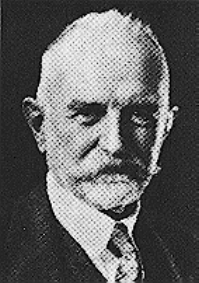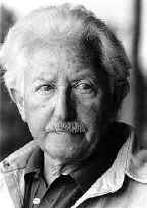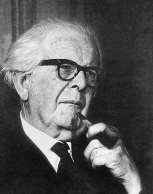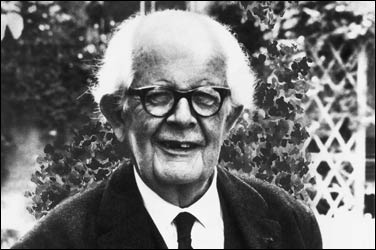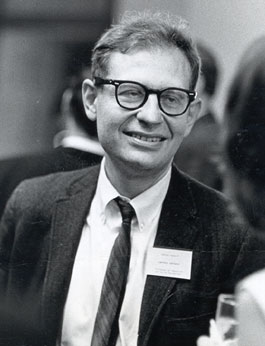|
Links |
|
Links |
|
| - Project: Socialization by the Social Structures |
|
||
| - Video: The Agents of Socialization 4:51 |
|
||
| - Video: Socialization 3:03 |
|
||
| - Video: Review of Socialization 1:03 |
|
||
| - Supplement: Putting the Social into Science. Forget about Nature vs. nurture. The answer lies in between. Nicholas A. Christakis. Time Magazine. Dec. 19, 2011 p. 28. |
|
||
| INTRO: FERAL, AS COMPARED TO NORMAL CHILDREN, DEMONSTRATES THE POWER OF SOCIALIZATION | |||
| Is the existence of Feral Children a myth or fact? |
|
||
|
|
Tableau on Feral Children | ||
| Harlow's experiments w/ baby monkeys demonstrates the devastating effects of social isolation during early stages of life | |||
| Monkeys raised in isolation from other monkeys did not develop normally | |||
| Artificially inseminated female monkeys who had been raised in isolation from other monkeys usually neglected or abused their offspring | |||
| When monkeys raised in isolation were given a choice, they preferred a soft, cloth artificial “mother” over a nursing, wire mother | |||
| Cases of children raised by animals have never been authenticated, but are very popular in myth | |||
| Institutionalized children who are deprived of interaction typically experience ongoing developmental & emotional problems, even if they receive all the necessary physical care | |||
| In relation to feral or neglected children, the total absence of interaction w/ other human beings produces personalities that cannot participate in human society | |||
| Babies whose parents largely ignore them over an extended time typically show poor intellectual development & high rates of personality difficulties | |||
|
|
SOCIALIZATION IS THE PROCESS BY WHICH MEMBERS OF A SOCIETY ARE TAUGHT TO PARTICIPATE IN THAT SOCIETY, LEARN THEIR ROLES, & DEVELOP SELF IMAGE |
|
|
| Socialization is the process whereby people learn, through interaction w/ others, that which they must know in order to survive & function w/in their society | |||
| The results of socialization are internalized | |||
| Internalization is the process whereby cultural or social psychological values, norms, attitudes, etc. are taken inside or to the inner part of the social self so that they become an integrated part of the social self indistinguishable from other facets of the self & personality | |||
| Internalization in relation to socialization is to unconsciously accept or assimilate the attitudes & behavior of one's culture or peer group. | |||
| An example of internalization in relation to socialization is that a woman who believes that women are intellectually inferior to men might be said to have internalized the sexist attitudes of the dominant culture | |||
|
|
SOCIALIZATION IS A LIFELONG PROCESS | ||
|
|
Socialization is a lifelong process through which we are "taught" roles & "develop" a self image |
|
|
| Socialization is the lifelong social experience by which individuals develop their human potential & learn culture | |||
| Social experience is also the foundation for the personality, a person's fairly consistent pattern of thinking, feeling, & acting | |||
|
|
Socialization is essentially the same as learning or imprinting, aka "deep learning" |
|
|
|
|
The processes of socialization are generally “natural” processes in that we are largely unaware of them |
|
|
| There is debate is sociology about the relative importance of nature versus nurture in shaping human behavior. This debate could be characterized biology versus socialization | |||
| Those who believe that an individual's genetic or hormonal makeup shapes human behavior would come down on the nature side of the nature versus nurture debate | |||
| Those who believe that social forces are the most important in shaping human behavior would come down on the nurture side of the nature verses nurture debate | |||
| Symbolic interactionist theories of socialization weigh heavily on the side of nurture | |||
|
|
The processes of socialization affect our personality, that is, Socialization goes deeper than education |
|
|
|
|
The majority of the processes of socialization occur before “consciousness,” i.e. before age 5 |
|
|
| All schools of thought agree that what happens in childhood has maximal influences throughout a person's life because it is in childhood that people first develop their patterns of thought & behavior | |||
|
|
But the processes of socialization do continue throughout life |
|
|
| The adult life cycle presents us w/ numerous new situations that require the learning of new roles | |||
| Social scientists do not accept the notion that all behavior in adulthood is a product of childhood experiences | |||
|
|
Our socialization may be “correct” or “incorrect” based on its congruence w/ the prevailing culture & subcultures in which we live |
|
|
| SOCIALIZATION FUNCTIONS TO HELP PEOPLE MEET NEEDS, PROVIDE INTERACTION, LEARN ROLES, & LEARN NORMS | |||
|
|
Socialization has FOUR functions |
|
|
| a. Socialization functions so people can to meet physical needs: coop hunter gatherers |
|
||
| b. Socialization functions to provide needed interaction |
|
||
| Normal human development is impossible w/o human interaction | |||
| c. Socialization functions so people can learn social roles |
|
||
| How well we perform in a role affects our self esteem | |||
| d. Socialization functions so people can learn norms |
|
||
| Childhood socialization is sometimes referred to as primary socialization |
| THERE ARE 6 PROCESS OF SOCIALIZATION, INCLUDING SMIPNN | ||
| 1. SELECTIVE EXPOSURE IS THE CONTROLLING OF THE INFLUENCES TO WHICH ANOTHER IS EXPOSED | ||
| Selective exposure is the process of exposure to those behaviors & attitudes considered desirable & sheltered from those regarded as undesirable | ||
| Maximization of good influences is selective exposure socialization | ||
| Examples: the V Chip; a father talking to his 11 year old son, "No, you may not watch Baywatch." Friends choosing what music to listen to; CNN's coverage of the news | ||
|
|
2. MODELING IS THE DEMONSTRATION OR ACTING OUT OF BEHAVIOR | |
| Modeling is imitating the behavior of significant others & role models | ||
| Modeling begins w/ observing the behavior of another & w/ retention of images of such behavior in a person's memory | ||
| After observing a behavior, one imitates, or reproduces that behavior | ||
| Eventually, however, imitation goes beyond mere habit, & it is repeated in situations beyond that in which it was originally observed | ||
| Examples: The little boy, dressing up like Dad & going off to work, or girls watching cheerleaders | ||
|
|
3. IDENTIFICATION IS AN EXTREME FORM OF MODELING WHERE THE OTHER ESTABLISHES AN EMOTIONAL BOND W/ THE MODEL | |
|
|
Identification is seeing ourselves as the same as someone who nurtures us | |
|
|
Identification is the positive feelings toward an individual that lead a child to want to be like that person | |
| Example: The little boy, day-dreaming of being a great baseball
player
The little girl, day-dreaming of being President |
||
|
|
4. POSITIVE REINFORCEMENT INCLUDES REWARDS & REMOVAL OF NEGATIVE REINFORCEMENT | |
| A friendly slap on the back or an invitation to join a group activity may be reward for an approved action or viewpoint | ||
|
|
5. NEGATIVE REINFORCEMENT INCLUDES PUNISHMENTS & REMOVAL OF POSITIVE REINFORCEMENT | |
| Positive & negative reinforcement socialization may also be known as reward & punishment socialization | ||
| Reinforcing correct behavior is reward & punishment socialization | ||
| Example: “You are such a good girl, eating w/ your fork like a grown-up!” | ||
|
|
6. NURTURANCE IS SUPPORT, AFFECTION, ETC. | |
| Nurturance is a special form of reward & punishment which is the support, affection, etc., or lack of, given by a significant other role model | ||
| Development of strong positive feelings towards another w/ whom one has a primary relationship is nurturance | ||
| Loving your child is an example of nurturance | ||
| THE PROCESSES OF SOCIALIZATION ARE CARRIED OUT BY THE SOCIAL STRUCTURES WHICH ACT AS THE AGENTS OF SOCIALIZATION: EG, THE SOC STRUCTURES (PF REG M CEML) ALL CARRY OUT SMIPNN | ||
|
|
Individuals, groups & the social structures are the agents of socialization |
|
| There are both manifest & latent functions of socialization by social structures |
|
|
|
|
Table on Manifest & Latent Socialization by AOS | |
|
|
- Project: socialization by the social structures | |
|
|
Methods of socialization by social structures
How do each of these social structures apply SMIPNN? |
|
|
|
Socialization occurs in the home, in school, on the job, etc. |
|
| Socialization takes place in each of the 10 social institutions | ||
| Agents of socialization rarely give a person the same messages about what kind of person they are | ||
| But the AOSs may preach one thing & do another | ||
|
|
PEOPLE, GRPS, & SOCIAL STRUCTURES ALL ACT AS AGENTS OF SOCIALIZATION, I.E. THEY PARTICIPATE IN THE PROCESS OF SOCIALIZATION | |
|
|
Table on the Methods of Socialization of the Social Structures | |
|
|
1. PEERS AS AN AOS become influential about age 2 & are the most influential on tweens & teens |
|
| Peer groups are those whose members have interests, social position, & age in common | ||
| Anticipatory socialization refers to the process of social learning directed toward gaining a desired position & commonly occurs among peers | ||
|
|
Peers are the social structure that is the most likely to ostracize |
|
| It is in junior high & high school years that the Peer agent of socialization has its greatest influence, as young people seek to establish their independence | ||
|
|
2. FAMILY AS AN AOS is the most important in the childhood years |
|
| Not all family learning results from intentional teaching by parents; children also learn from the type of environment adults create | ||
| The family also gives children a social identity & thus in part, social identity involves race | ||
| Socialization w/in the family also varies markedly by social class | ||
|
|
The family is the social structure that is the most likely to use selective exposure |
|
| In the early years, the years is the most important agent of socialization | ||
| The institution w/ a profound effect not only on children's knowledge, but also on their self image, their understanding of reality, & their mode of reasoning, is the family | ||
|
|
In the home, Girls learn expressive skills ( nurturing, communication ) that are later useful in the workplace |
|
|
|
In the home, Boys learn instrumental skills ( work, goal oriented ) that are later useful in the workplace |
|
| Children need not be told they are good at everything; a balanced self image is much healthier than one that cannot accept any shortcomings | ||
| Parents’ socialization of kids depends on their job experience; e.g., LC teaches obedience & the UC teaches initiative | ||
| The job dependent socialization by Parents often influences or leads to occupational inheritance |
|
|
3. RELIGION AS AN AOS lost influence at mid century, but is now regaining influence | |
| Religion as an AOS varies widely since fewer than half of Americans participate in it weekly | ||
|
|
4. THE ECONOMY / WORK AS AN AOS is, for such theorists as Marx, & to a certain extent Weber, & others, one of the most important agents of socialization, & may be even more influential than the family / parents | |
|
|
Formal socialization in the workplace is called orientation | |
| Informal socialization in the workplace is called occupational culture | ||
| Occupational culture encompasses such factors at dress, sociability, pace of work, length of breaks, & much more | ||
| Workers must learn the job culture (a job's shared knowledge, beliefs, values & norms) on dress, sociability, performance, attitude, etc. or risk ostracism or failure | ||
|
|
5. GOVERNMENT AS AN AOS is becoming more pervasive | |
| The govt socializes us in general to national commitment, patriotism, & specifically to a particular policy | ||
| The govt uses formalized processes of socialization such as speeches: JFK: Ask not what your country can do for you. Ask what you can do for your country" | ||
| The govt uses informal processes such as sloganeering:
My Country, Right or Wrong! America: Love It or Leave It! |
||
| Because of govts' past excesses, many fear govt over socialization via the "Big Brother" Syndrome | ||
|
|
6. THE MILITARY AS AN AOS socializes members & citizens to loyalty, honor, sacrifice, etc. | |
|
|
7. CHARITY AS AN AOS socializes people to the ethic of giving, the value of helping, & the belief that some are deserving of others' help | |
|
|
8. EDUCATION AS AN AOS is expanding from secular knowledge to cultural beliefs | |
| Schools join w/ families in socializing children into gender roles | ||
| In education, children learn "a hidden curriculum" including how to work, punctuality, orderliness, etc. which prepares them for the world of work | ||
| Some researchers say the hidden curriculum in school is more influential than what is learned | ||
| The hidden curriculum is based on race, gender, class, looks, apparent intelligence, sociability, etc. in that children are socialized based on race, gender, class, etc. | ||
| The hidden curriculum passes on important cultural values | ||
| For most children, school is their first experience w/ bureaucracy | ||
|
|
9. THE MEDIA AS AN AOS socializes people to mass & popular culture which is heavily influenced by the profit motive of the media itself & those commercial interests that utilize it | |
| The mass media are impersonal communications aimed at a vast audience & also shape socialization | ||
| The influence of the media is growing dramatically | ||
| In recent decades the media has become, perhaps, the most influential agent of socialization |
|
|
| National surveys show that the average household has at least one TV set turned on for more than eight hours each day & that people spend half their free time watching television | ||
| Years before children learn to read, television watching is part of their daily routine | ||
| Liberals note that racial & ethnic minorities are largely invisible in the medium or included only in stereotyped roles; the latter charge | ||
| Conservatives note that television & film industries are dominated by a cultural elite | ||
| The public is concerned about the amount of violence & crudeness on television & other media | ||
|
|
10. LEISURE / RECREATION AS AN AOSsocialize people to take & enjoy leisure w/out guilt, to live a consumptive lifestyle, & to live more for today rather waiting until retirement |
Tableau
on Feral Children
The Wild Girl of Champagne 1700s in the Champagne region of France She was guessed to be 10 to 18 yrs. old when discovered
Reportedly had a small body covered only by rags & animals skins Amazed everyone by skinning & eating rabbits & chickens... raw, entrails & all The girl was eventually transferred to a hospital & later to a convent. She could not adapt to a sedentary lifestyle & civilized food She lost all her teeth & lost her previously robust health She was named Angelique Memmie LeBlanc
|
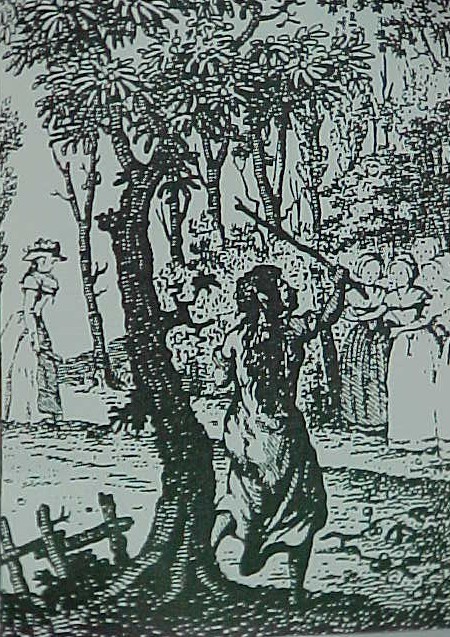 |
|
|||||
| Social Institutions | Socialization is a: | ||||
| 1. | Peers | latent function | |||
| 2. | Family | manifest function | |||
| 3. | Religion | manifest function | |||
| 4. | Econ/Work | latent function | |||
| 5. | Govt / Politics | latent function | |||
| 6. | Military | latent function | |||
| 7. | Charity | latent function | |||
| 8. | School | manifest function | |||
| 9. | Media | latent function (one way?) | |||
| 10. | Leisure / Recreation | latent function | |||
|
||||||||
|
( PF REG M CEML ) |
( SMIPNN ) |
|||||||
|
|
|
|
||||||
|
|
|
|
||||||
|
|
|
|
||||||
|
|
|
|
||||||
|
|
|
|
||||||
|
|
|
|
||||||
|
|
|
|
||||||
|
|
|
|
||||||
|
|
|
|
||||||
| 10. |
|
|
||||||
Demonstration or acting out of behavior Children, esp, imitate behavior especially of Significant Others & Role Models As a child we model almost everyone & everything around us Teens & adults also imitate But we model only those people/things that we feel are important to us |
While we model almost everyone as a child, & important people as an adult, we only identify w/ those who inspire or nurture us Strongest examples Heroes Lovers Identification is a subset or type of modeling Identification is a more powerful version of modeling We may model our favorite boss, religious leader, actor but we may or may not id w/ them Almost all children identify w/ parents Some say: we have no models / heroes today...... true?
|
Giving.... care help affection attention ( listening ) The lack of nurturance is extremely powerful Ostracism is one of most powerful social weapons Greater than punishment We develop strong positive feelings toward person acting as an AOS because
any of previous 5 methods of socialization can be seen as nurturance
|
They act as importance influences on
|
Peers as an AOS become influential about age 2 & are the most influential on tweens & teens It is in junior high & high school years that the Peer agent of socialization has its greatest influence, as young people seek to establish their independence - children “choose” their own SOs - demand tremendous conformity - greatest influence
|
In the early years, the family is the most important agent of socialization
|
Religion as an agent of socialization varies widely since fewer than half of Americans participate in it weekly Focus on moral socialization & ultimate goals - use of religion as AOS varies widely - half of Am attend church once a week - historically lost influence; is on a come-back
|
Most imp form of adult socialization - socialize us to “higher needs:” recognition, fulfillment, SA
|
Entry level intros; Orientation UVaW: 1 week of orientation: Meet all top level mgrs. Meeting w/ all new Professionals; Meet w/ Department; OJT: large variation among workplaces Becoming more prevalent in US; Europe, Japanese way ahead US more likely to assume worker is prepared for wk & offer little training OJT |
Builds on / employs loyalty - Complicated system that “the people control” - becoming ever more rationalized/effective - becoming ever more pervasive (its everywhere)
|
Boot camp
|
|
School: 1st major separation from home life
|
- gaining influence - becoming ever more rationalized/effective - becoming ever more pervasive (its everywhere)
|
- socializes us to “higher needs”
|

